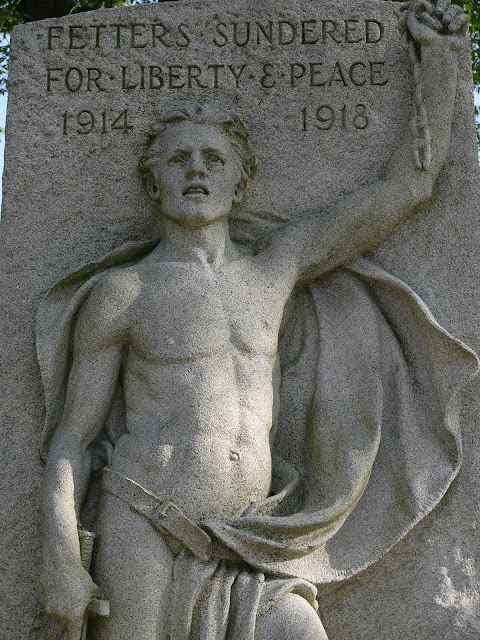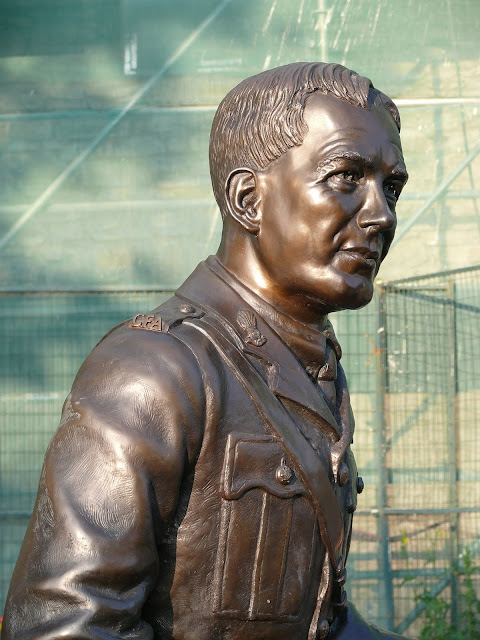
Location: Lambton County N 42 47.027 W-82.07.308
On the southeast corner of Oil Springs Line and Elizabeth Street.

Oil Springs is home to the first oil discovery and the first commercial oil well in North America, when in 1858 two local men made the find while searching the local swamp for a gooey waterproofing material. The rest is history as they say, and the village of Oil Springs was born. Home to the the Oil Museum of Canada, this sleepy little town was once the hub of the oil industry.
The cenotaph was erected in 1919 on the former site of the village's largest hotel, Sherman House. The names engraved on the memorial are from the men who gave their lives in the World Wars. Also listed on the side is the name of young man lost in the South African War. A unique statue is carved into the front of the memorial, presumably to depict one of the fallen sons. The names of the major battles of WWI are also carved into the base of the statue. The memorial represents the village of Oil Springs and the township of Enniskillen. Situated in a quiet parkette, along with a pair of benches, this is a nice place to reflect and remember the sacrifices of the past, and the incredible history of this village.


Marker text:
Front:
FETTERS SUNDERED
FOR LIBERTY & PEACE
1914 1918
HARRY BARRY
EDWARD BROOKS
ISAAC BENNETT
HOWARD WARD
ERNEST EDGAR EVANS
R.J. ANDERSON
JOHN WILSON
HAROLD C. WILLOUGHBY
HARRY ROBERTSON
ORTON (JACK) GRIFFIN
ADAM P. CHALMERS M.D.
EDWARD KERR
WALTER F. DUGGAN
WM. GEORGE PENFOUND
WILLIAM DUNCAN
ODEIL DEPORTER
JAMES L. PENROSE
ERECTED TO COMMEMORATE
THE SERVICE AND SACRIFICE
OF THE MEN FROM THE VILLAGE
OF OIL SPRINGS AND THE
TOWNSHIP OF ENNISKILLEN
WHO FELL IN THE GREAT WAR
1914-----1918
TO HONOUR ALL
WHO SERVED
CANADA
EN HOMMAGE
A CEUX ET CELLES
QUI ONT SERVI


Around base:
COURCELETTE
VALENCIENNES
VIMY RIDGE
SOMME
MONS
LENS

Left side:
S. AFRICA 1899---1902
WM. HENRY ARTHUR

























